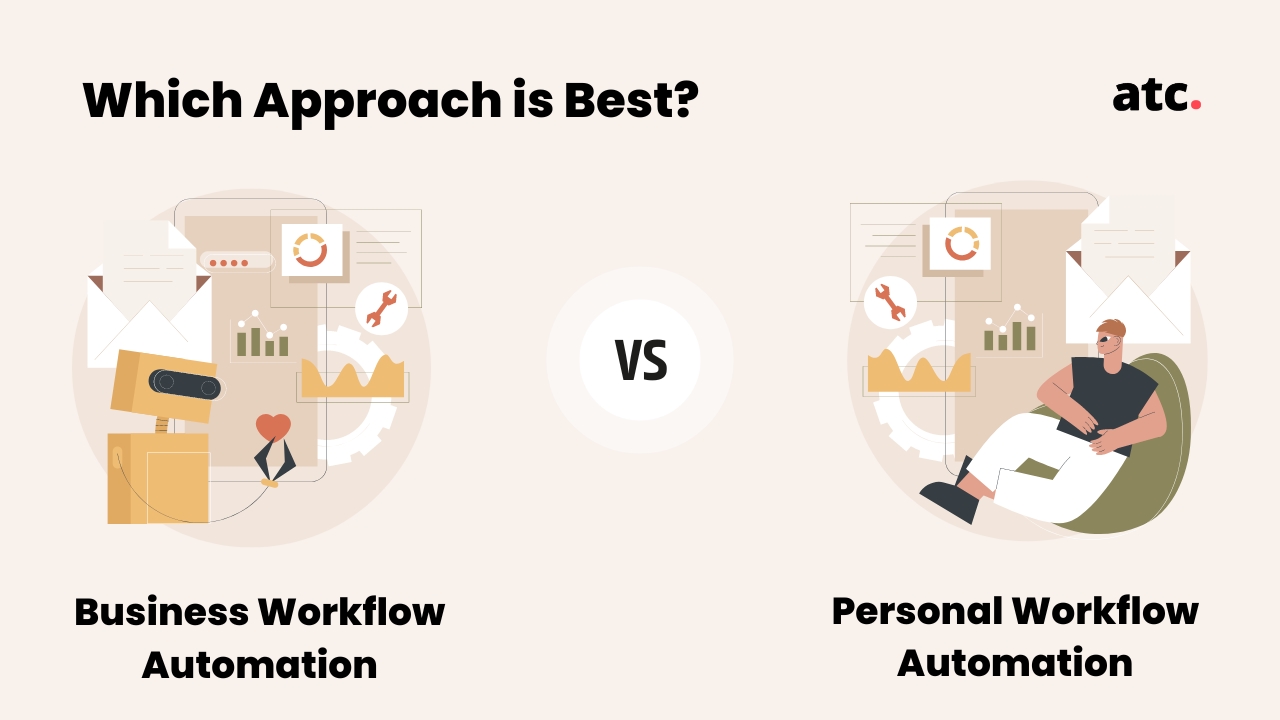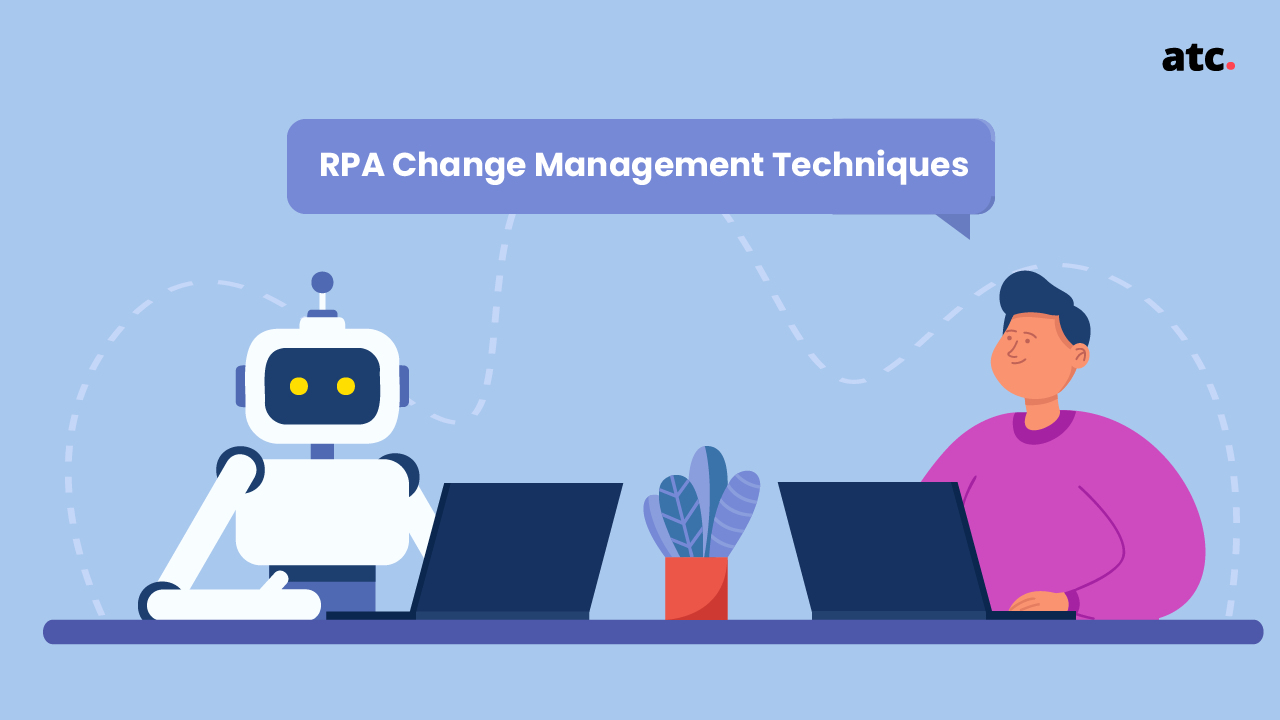Subscribe to the blog
Robotic Process Automation (RPA) is a software technology that helps automate digital tasks. With remote and hybrid work structures becoming the norm in the aftermath of the pandemic, there's no gainsaying that the digital landscape has become extremely crowded and cluttered.. A lot of our work is done in the virtual sphere, and just like we benefit from the assistance of humans for repetitive tasks, we can benefit from bots serving us the same way in the virtual world.
Robotic Process Automation encompasses the use of software bots that are trained to mimic tasks performed by humans. Want someone to copy-paste the data from one database to another? Need help moving files? Need help extracting unstructured data? The bot has got you covered. Think of any clerical work that follows a pattern and robotic automation can likely be applied there.
If there's a task you need to do and a rule must be followed for the successful completion of the task, rest assured that a bot can learn to do it as well. So you can automate all the processes that you can define in the form of rules, even if the task requires you to interact with multiple, disparate IT systems. However, not everyone understands RPA completely.
5 Myths About Robotic Process Automation (RPA)
Let us look at some of the common misconceptions about RPA bots and try to dispel any confusion around the nature of its work that helps us with various processes. We also explore how this work is made possible by RPA.
- RPA involves a physical robot
This myth is probably the byproduct of a most literal understanding of robotic automation. Understandably, the word “robotic” in the term RPA can be misinterpreted for the involvement of physical robots. After all, every pop-culture and science-fiction depiction of robotic technologies always involves physical machines.
Reality—No physical robots are involved in RPA, which is software, not hardware. This technology can mimic and recreate the repetitive and rule-based tasks that humans perform in the digital sphere, only more accurately and faster.
RPA technology is super beneficial in cutting down the mundane or routine tasks from the list of administrative tasks that humans are forced to attend to. RPA can execute these tasks with zero or minimal errors. By training RPA technology to replicate these tasks, we free up time for the human mind to be allocated to tasks that require more creative inputs.
That said, RPA isn't Artificial Intelligence (AI) either. The most notable difference between RPA and AI is that the former is an attended automation mechanism, while the latter aims to create a mechanism for unattended automation, whereby humans help the algorithm pick up patterns to construct its own logic. RPA, on the other hand, uses the structured inputs and data we feed into it. Both these technologies can together create a system with end-to-end automation.
- RPA will steal our jobs
Another common myth—with almost any revolutionizing technology—is that RPA will replace humans and therefore jeopardize their employability. Nothing could be further from the truth. It's a very outdated fear that robots will take over our jobs and leave us jobless and scrambling for employment opportunities.
Reality—For the RPA bots to perform their function, they need inputs on logic and patterns from us. These technologies cannot function independently from humans; they use human input and also aren't able to replicate the higher-order thinking ability of humans.
No one is denying RPA's role in automating repetitive administrative tasks. Of course, one of the direct impacts of a successful RPA operation would be substituting human labor with machines, but there is a nuance to how this works. What RPA helps us do is eliminate busy work and repetitive tasks so that the human talent can be redirected towards more creative tasks—work that relies on unique human capabilities that no machine or bot can emulate. These include soft skills like judgment and social skills, problem-solving, emotional intelligence, reasoning, and a plethora of other human skills.
So, if we see clearly, what we achieve through RPA is the elimination of tedious work from our to-do list so we can focus on more fulfilling tasks and resultantly reap the benefits of higher productivity and creative output.
There's another compelling argument that helps bust this myth once and for all. Think about the jobs that automation has created, the jobs that didn't even exist 10 years ago: Digital marketers, cloud specialists, anyone working with big data, Android and iOS developers, and even influencers!
Through the deployment of RPA, we are redefining and reallocating human talent to tasks that can use the human touch, such as customer experience. Thus, RPA doesn't destroy jobs, it just changes them. It also creates new jobs that require highly specific skills and knowledge.
- RPA is not reliable or safe
Cybersecurity concerns have gone through the roof in recent years. As is the case with any new technology or tool, RPA is also met with a lot of suspicion about the security in its implementation. It is widely believed that RPA may cause a breach of security or protection in the IT systems.
Reality - RPA is developed with all the latest safety and reliability measures in mind. In many cases, RPA offers more privacy, protection, and robust compliance than a human employee could ensure.
That said, every technology comes with some level of security risk, even if minuscule. Even though encryption is used widely by RPA systems, there might still be some low-security RPA tools out there. Through those tools, the non-encrypted data might slip through the cracks. The best way to avoid such a scenario is by taking steps to reveal the flaws of the system and other security risks. This can include scanning the RPA bots for vulnerabilities or implementing threat modeling.
At the other end of this myth is the idea that RPA bots are always 100% accurate. That's also an assumption we should refrain from making. Why? Because all automation tools are only as good as the data fed into them. They don't have a common sense of their own, so they will develop their actions based on what human inputs they receive. So if you input flawed instructions into the bot, it will give a subpar performance.
- RPA doesn't integrate well with existing systems or in my industry
Myth - There's another common misconception that RPA is only useful for certain industries, such as finance. There are apprehensions about its integration with existing systems in other industries.
Reality—One of the biggest advantages of RPA is that it integrates seamlessly into your existing systems, even the really old ones. You don't need to make grand changes in your IT systems to implement RPA.
This is because repetitive administrative tasks exist in all industries and offices. RPA helps get these tasks out of your way, irrespective of the industry. In retail, RPA can process orders. In the insurance sector, it can process claims. For a hospital, it can schedule appointments. The banking sector finds RPA useful in detecting fraud. So as long as there is repetitive, rule-based, high-volume work that is within the capacity to get automated in your industry, RPA has relevance.
- The costs aren't justified
It’s a myth that the costs involved in the implementation of RPA are too high, as compared to the benefits it incurs.
Reality—Any new technology comes at a cost, and RPA is no exception to that fact. For all the operational costs that it saves, RPA is rightfully a financial investment. That said, financial investment in an automation technology like this does not come without returns. It may come with high initial implementation costs, followed by service costs to keep it going. But the payoff from RPA is in the form of reduced cost of in-house personnel or the costs of outsourcing. The initial implementation costs end up compensated after all.
Think of the costs that come with enterprise resource planning (ERP) or business processes management software (BPMS). RPA costs seem justified against those.
In fact, when you compare the ROI, RPA is the fastest path to cost reduction. RPA runs at ~33% of the cost of an offshore resource and ~10% of an onshore resource and has been known to deliver savings of $2 trillion in global workforce costs. PwC also reports that RPA is useful to reduce operational costs and secure ROI goals faster than the old enterprise resource planning (ERP) deployment. And then there are the efficiency benefits. RPA, when implemented correctly, can bring gigantic returns.
With time, you will notice that the RPA costs were an investment with ongoing returns.
Conclusion
When you understand RPA correctly, you will be able to see its long-term benefits. Myths around new technologies exist due to a lack of exposure to and awareness about such technologies. But knowing exactly how RPA bots help accelerate business functions, you’d be able to see that RPA can be a positively disruptive transformation for your business.
If you wish to implement RPA in your business to automate menial and redundant tasks, connect with us right away.




